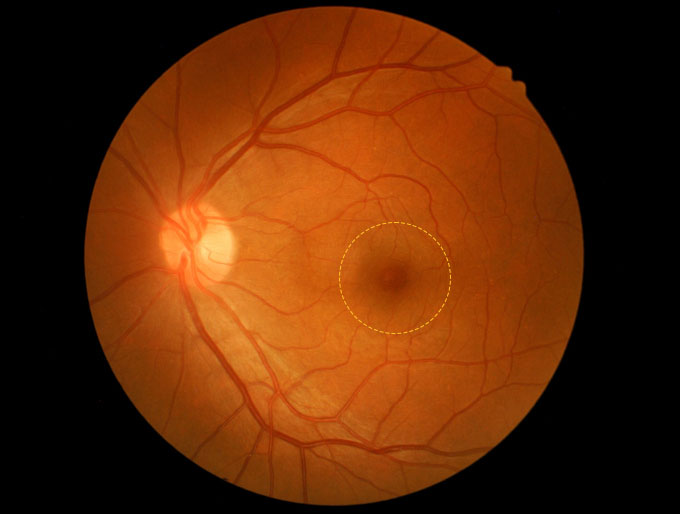A Treatable Cause of Central Vision Loss
If you’ve spotted a dark patch, some blurriness, or distortion right in the centre of your vision when you are focusing or reading. It could be more than just the natural effects of ageing. A macular hole is a tiny tear in the macula, which is the central part of the retina that gives us our sharp, straight-ahead vision. While it might sound a bit scary, a macular hole is a well-known condition, and with prompt treatment, many people can see a significant improvement in their vision.
At London Eye & Retina, we prioritise early detection and precise treatment of macular holes, helping our patients regain the clarity and confidence they need for their everyday lives.
What is a Macular Hole?
It’s a full-thickness opening in the macula that can lead to a noticeable decline in central vision. This condition typically develops slowly and usually affects only one eye, although the other eye may also be at risk. Thankfully, peripheral vision usually stays intact. Most often, this condition impacts individuals over the age of 60 and is frequently associated with age-related changes in the vitreous, the gel-like substance that fills the eye.
Causes and Risk Factors
- Age-related vitreous changes: As the vitreous shrinks with age, it can pull on the macula, potentially creating a hole.
- High myopia (short-sightedness)
- Retinal detachment or trauma
- Diabetic eye disease
- History of eye surgery or inflammation
Symptoms to Look Out For
- Blurred or distorted central vision
- A dark or empty spot in the centre of vision
- Difficulty reading or seeing fine detail
- Straight lines appearing bent or wavy (metamorphopsia)
- Trouble recognising faces
These symptoms may worsen over time without treatment, so early diagnosis is crucial.
How Is a Macular Hole Diagnosed?
Diagnosis involves a detailed eye examination, including:
- Optical Coherence Tomography (OCT): High-resolution imaging to confirm the presence, size, and stage of the hole
- Visual acuity tests and Amsler grid testing
- Dilated retinal examination to assess the overall eye health
OCT is the gold standard in diagnosing macular holes and monitoring post-treatment recovery.
Treatment: Vitrectomy Surgery
The main treatment for a macular hole is pars plana vitrectomy, a microsurgical procedure in which the vitreous gel is removed and replaced with a gas bubble that gently presses the macula to promote closure of the hole.
During surgery:
- The epiretinal membrane (if present) is peeled.
- A gas bubble is inserted to hold the macular edges together.
- Patients may need to maintain a face-down position for a few days to support healing.
Recovery and Visual Outcomes
Vision typically improves gradually over several weeks to months after surgery. The success rate for hole closure is high, particularly when treated early. Some patients may still experience mild distortion, but most regain functional central vision.
Take Control of Your Eye Health
Macular holes caught early are more likely to respond well to treatment. Left untreated, the hole may enlarge and lead to permanent vision loss.
Schedule a consultation with Dr. James Ng at London Eye & Retina and explore your options for clearer, sharper sight.
Let us help you restore central vision and improve your daily clarity.


